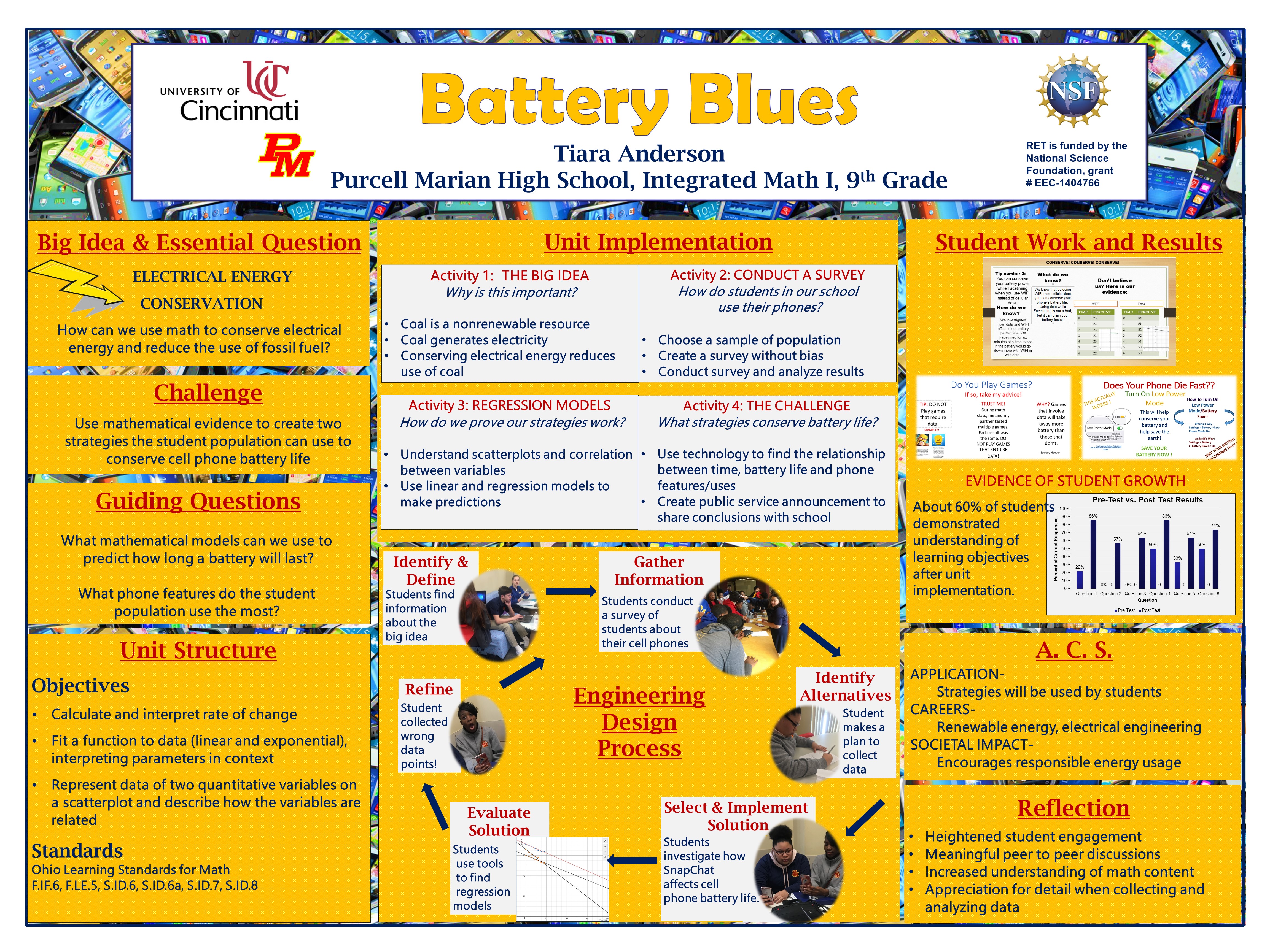Research Experience for Teachers (2017-2018)
Battery Blues
 |
||||||
|
||||||
|
The Big Idea (including global relevance) Conservation of Electrical Energy |
|
Essential Questions How can we use math to conserve electric energy and reduce the use of fossil fuel? |
|
The Hook
|
|
The Challenge Use mathematical evidence to develop and support two strategies to conserve phone battery life using a specified template. |
|
Guiding Questions
|
ACS (Real world applications; career connections; societal impact)
Conserving battery life of a cell phone is relevant to high school students’ real world. It is evident students use cell phones for their everyday dealings and are interested in conserving their battery life.
Students will learn that electricity is produced from coal. Coal, and other fossil fuels are of limited supply and are diminishing quickly, yet the demand for energy continues to grow. Students will recognize that we all have the obligation to be responsible consumers of energy and that something as simple as conserving cell phone battery life may have a great impact.
Mechanical Engineer, Chemical Engineer, Material Scientist , Construction Worker (Clean Energy), Project Manager
Misconceptions
- Students may confuse a linear model with an exponential model, not understanding that a linear model has a constant rate of change (adding factor) and an exponential model has constant growth rate (multiplying factor).
Unit Lessons and Activities
- Lesson 1: Gathering Information (5 days)
Students will research and discuss issues surrounding limited fossil fuel serving as the motivation of the challenge. Students will then create a survey to gather information concerning phone usage. Students will choose a sample of the student population, create unbiased questions, execute the survey, organize data using matrices and analyze the results using frequency tables, histograms, and bar graphs. These results will drive the direction of the challenge.- Activity 1: Introduce the Big Idea – Conserve! (1 day)
- Activity 2: School Wide Survey – Create Survey, Collect Data, and Analyze Data (4 days)
- Lesson 2: Regression Models (8 days)
Students will explore how height relates to shoe size by creating a linear model. Students will use the line of best fit to calculated interpolated and extrapolated data points. Students will learn to make predictions of the line of best fit by hand and by using Desmos Graphing Calculator. Students will use the combination of survey results and linear and exponential regression models to complete the challenge.- Activity 3: Regression Models – Height vs. Shoe Size (4 days)
- Activity 4: The Challenge (4 days)
- Evidence of CBL: Lesson 2, Activity 4
- Evidence of EDP: Lesson 1, Activity 1; Lesson 2, Activity 4
Additional Resources
